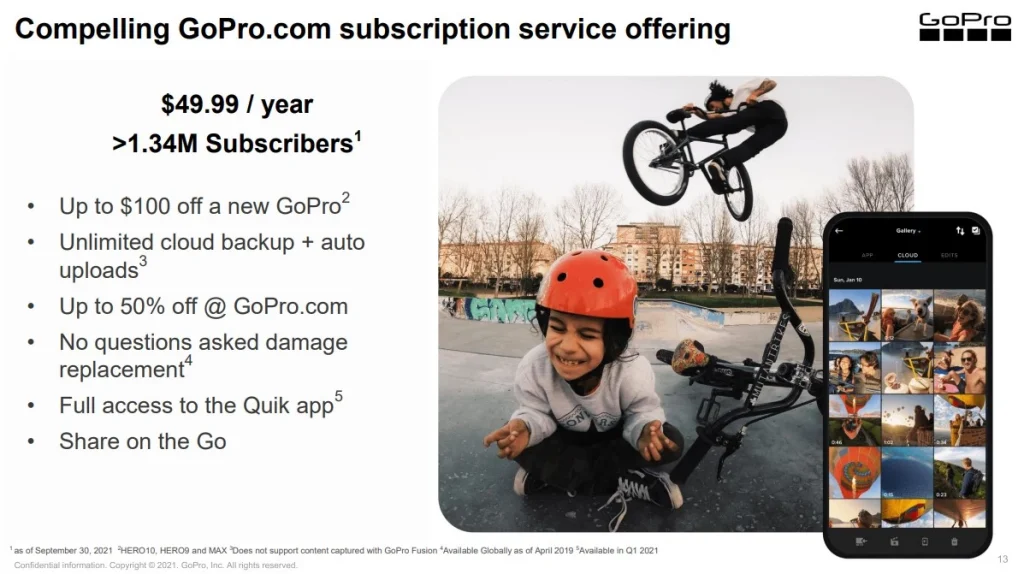Innovation Alphabet
Subscription Model
in a nutshell
A subscription model is a business model that generates revenue by charging customers a fee at regular intervals. The company provides products or services to subscribers on a subscription basis, usually monthly or annually. In this way, loyalty becomes more important than acquiring new users.


Rundle
Bundled subscriptions are proving to be powerful tools to attract, engage, and retain users. A bundle happens when companies package several of their products or services together as a single combined unit, and offer it for a lower price than they would charge customers to buy each item separately.
Consumers are shifting to using more and more subscription services than they have ever used. That was to be expected: businesses are looking for a way to simplify experience for their customers and increase retention. Software that was paid for once every few years when a new model came out, is now a monthly expense. This is a new form of subscription model known as rundle.
Selling a subscription instead of a permanent license allows developers to continually refine the product. This way, customers end up paying about the same amount as they would to buy a new version every few years. They just wait less time for new improvements. But truth is that you can get subscriptions for everything, including physical goods.
“Rundle” comes from NYU professor of marketing Scott Galloway, as an abbreviation of recurring revenue bundle. Rundles mark a paradigm shift of the subscription services offer. Hence, new ways of thinking require new terminology to describe them. In particular, Galloway focuses on Apple’s strategy and how you can pay one monthly fee for all your Apple needs.
Application fields
• Streaming platforms: Among the brands using a subscription model, platforms that provide audio or video streaming services are now unquantifiable. These are often entertainment-related industries, such as Spotify or Netflix, but periodic paid service providers for distance learning and information are not uncommon.
• SaaS (Software-as-a-Service): The acronym denotes a model for distributing software that is accessible to the user via the Internet and upon subscription. The provider hosts and manages the applications and takes care of maintenance activities. Typically, a limited free trial period is offered, after which it is possible to renew at a set price.
• Content: This is a category that often concerns newspapers in their respective online versions: the New York Times, National Geographic, and Corriere della Sera, for example, make certain articles and content accessible only after passing a paywall. The “wall” of course, collapses once the digital subscription to the platform is paid.
Industries
• Subscription model in the automotive industry
German automaker Audi introduced a subscription model in 2017 that allows its customers to drive certain cars for hire. Its slogan is quite explicit about the benefits of the initiative: “All of the power. None of the responsibility.” The economy is increasingly geared toward subscription rather than ownership of cars, software, clothing, or entertainment tools.
• Subscription model in the fitness industry
Peloton, founded in 2011 in New York, is a company that manufactures gym equipment for home use. It is best known for the Peloton Bike, an exercise bike that has revolutionized the world of indoor cycling, creating a real community. How? Through a fitness platform integrated into the equipment they make. The subscription includes classes and customized workouts depending on the physical performance monitored through the tool itself. One can train in a group or alone, track progress and earn results.
• Subscription model in the gaming industry
Nostalgic “Crash Bandicoot” fans will still keep the videogame in a glass showcase. But today digital saves on space and romance. Sony’s PlayStation Now platform is an on-demand subscription service for consoles and Windows PCs that allows users to stream games without the need to insert a disc or install the game, and without any processing. It is all based on Gaikai’s cloud technology and Microsoft Azure. With a library of at least 650 video games (including now legendary titles such as “God of War” and “The Last of Us”) the number of subscribers exceeded 3 million in May 2021.
Do you have a Marketing & Sales challenge to tackle? Let’s face it. Together.
C-levels from these companies (AND MORE) relied on my expertise to overcome thEIR CHALLENGES IN THIS AREA. and You can, too.
Can I help you?Business Functions
• Subscription model in support of customer relationships
GoPro is a California-based company that chronicles the adventures of its users by empowering them to take one-of-a-kind photographs. The GoPro (formerly PLUS) program grants subscribers unlimited cloud storage, customer support for replacing damaged components, and special discounts on accessories.

• Subscription model in support of HR
The most widely used social network for B2B communication, LinkedIn, purchased in 2015 the startup Lynda for $1.5 billion and renamed it “LinkedIn Learning.” The platform offers video courses for businesses taught by industry experts in software, creative and business skills. It is chosen by 78 percent of Fortune 100 companies.
• Subscription model to support communication
Adobe is a software house that offers some of the most widely used programs in the world of graphic design, which is also fundamental for the creation of an effective communication campaign. The company switched to a subscription model in 2013, which then culminated in the creation of Adobe Creative Cloud, a platform that allows users to download the programs to their computers and then decide whether to limit themselves to the free version or pay the monthly fee to enjoy outstanding features.
Stay in wonderland
Let me show you how deep the rabbit hole goes.
Check out more of the Innovation Alphabet:

3D Printing
3D Printing
“3D printing” is a process carried out by an electronic device which, instead of resorting to the canonical ink, it molds almost any kind of material: from concrete to living tissue, most usually plastic, but also metal. And the operating principle is similar to that of a traditional printer. The creation of three-dimensional models can lead to the redesign of a company’s production capabilities.
Dive In
5G
5G
5G is the new frontier of cellular telephony. It was designed to improve (or completely replace) previous generations of mobile networks. The 5th generation features lower latency, ensuring flawless performance of business applications and many other digital experiences – thus enabling the new cultural generations to furiously play Fortnite away from home.
Dive In
Advanced Analytics
Advanced Analytics
The term “Advanced Analytics” refers to the ability to autonomously or semi-autonomously analyze data and content to identify correlations, develop analyses, predictions, and recommendations. It is not just a matter of collecting information and then organizing it into watertight compartments: the ultimate goal is to identify a dialogue pattern from a data-driven perspective.
Dive In
Agile
Agile
Agile is an approach to software development designed to respond to change. Teams quickly analyze the context in which they operate, identify uncertainties faced, and figure out how to adapt to always move forward. Interaction between individuals comes before processes and tools; collaboration with the customer is more important than negotiating contracts.
Dive In
Ansoff Matrix
Ansoff Matrix
The Ansoff Matrix is a marketing planning model that arises from the intersection of new and existing products and markets. It derives four possible strategies for expanding the company’s market, which are built around four variables with a changeable factor of risks and possibilities: existing product, new product, existing market, new market.
Dive In
Artificial Intelligence
Artificial Intelligence
Artificial Intelligence is not strictly defined. Basically, it is a computer system able to make decisions in an independent and flexible way. A good AI application can perform everyday tasks better than an average person (e.g., identifying other people from their photos on social media or beating the best chess player). Nothing to fear, then. Unless you are a chess champion.
Dive In
Artificial Scarcity
Artificial Scarcity
We often tend to desire what we cannot have. Or what we are in danger of losing: Artificial Scarcity is a strategy that flaunts a limited number of items that do not correspond to actual availability. The goal is to stimulate the perception in consumers that the stock of items is about to run out and thus create a need based on the “fear of being cut off” or the intention to buy the item in order to resell it at a higher price.
Dive In
Attack Surface
Attack Surface
The term attack surface refers to the part of a system that may be subject to attack or breach by hackers. The smaller that surface is, the easier it will be to protect it. Indeed, the Internet is an ocean of deep, dark waters: those who navigate it must be aware that they are exposing themselves to a flood of digital risks. Yet, ironically, we do not need a big boat to shelter us.
Dive In
Augmented Reality
Augmented Reality
Augmented Reality is an ever-evolving technology that overlays multimedia information on top of our common sensory horizon to gain a deeper understanding of our surroundings. No, it doesn’t allow you to step out of the Matrix dream simulation, nor can it be accessed by swallowing a red pill. But neither is it the disturbing experience of the Playtest episode of Black Mirror.
Dive In
Balanced Scorecard
Balanced Scorecard
In business, as in life, you need balance. The Balanced Scorecard is a holistic tool for strategic management. It offers, in fact, the possibility of assessing corporate performance in its wholeness. An overview that embraces four perspectives: the business/financial side, customers and stakeholders, internal processes, and learning and growth.
Dive In